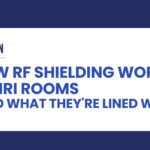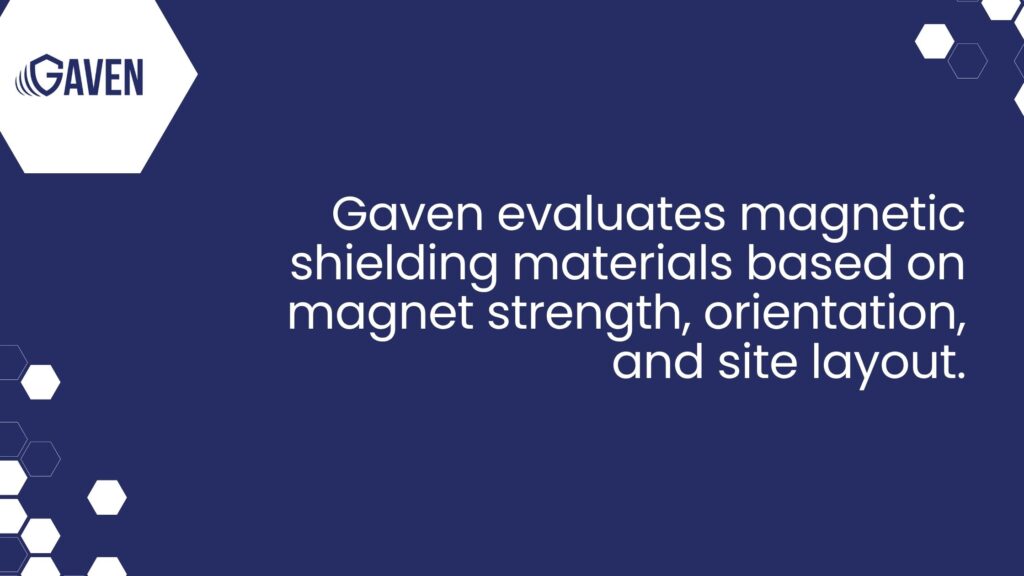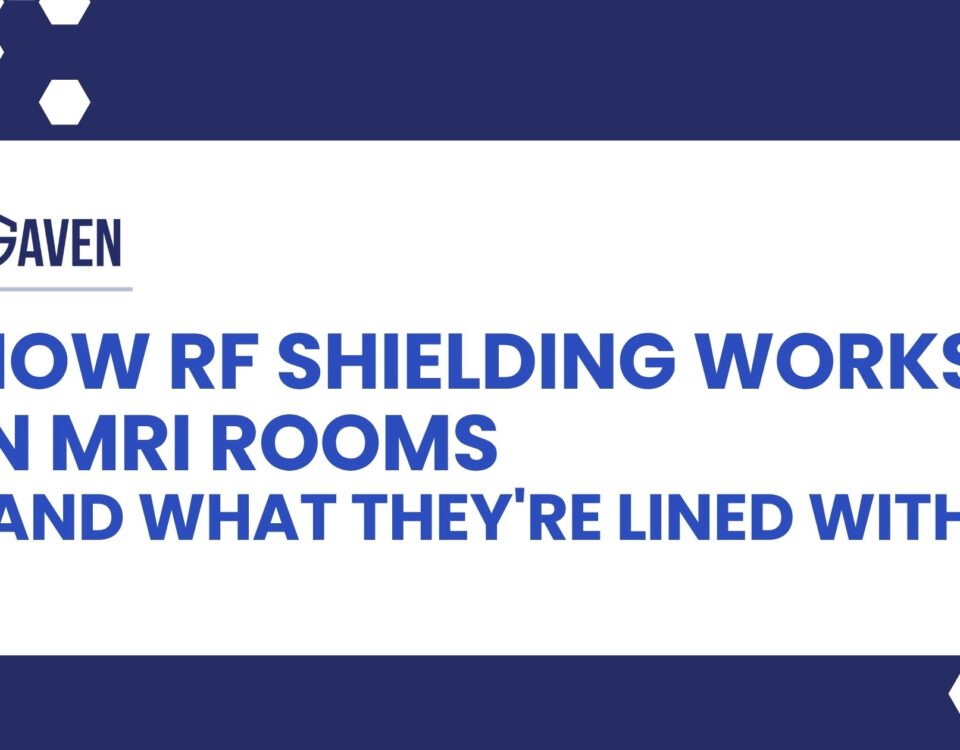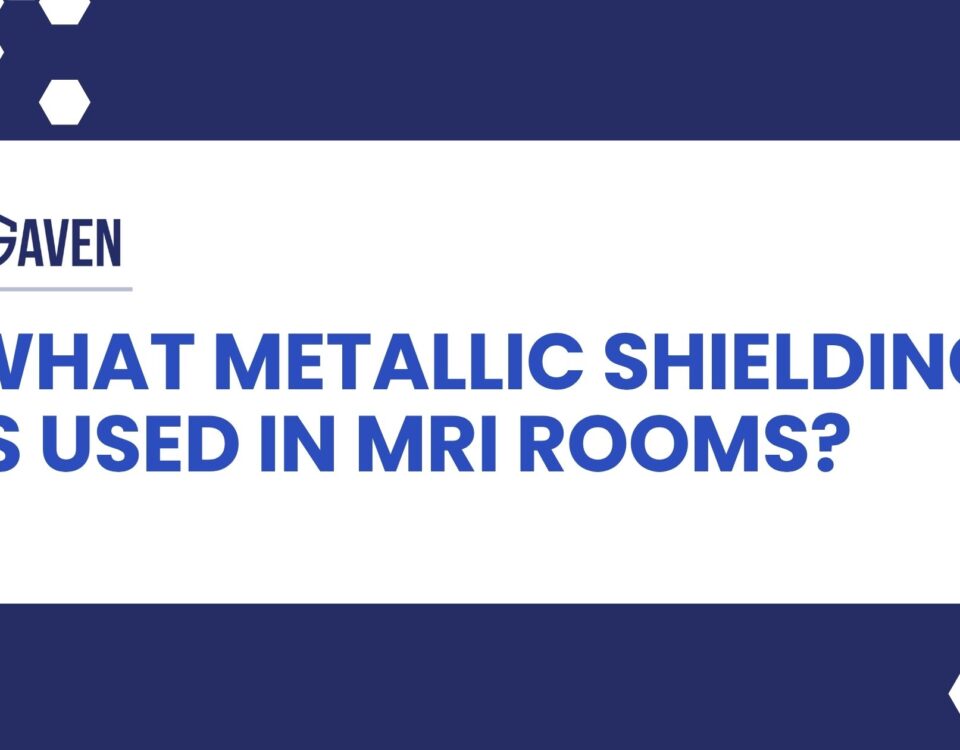


What Metallic Shielding Is Used in MRI Rooms?
July 8, 2025


How RF Shielding Works in MRI Rooms (and What They’re Lined With)
July 8, 2025MRI shielding is one of the most critical yet least visible components of imaging suite design. The materials behind your walls, floor, and ceiling directly determine whether your scanner performs as expected—or falls short due to electromagnetic interference, image artifacts, or compliance failures.
So, what material is used for MRI shielding? The answer depends on whether you’re targeting radiofrequency (RF) interference, magnetic fringe fields, or both—and whether the room is new construction or a retrofit.
At Gaven Industries, we engineer shielding systems to meet both clinical and structural performance standards. Our approach prioritizes reliability, lifecycle durability, and real-world testing—because shielding isn’t theoretical. It’s foundational.
For a full overview of shielding systems, visit our MRI Shielding page. You can also explore MRI room shielding requirements for detailed guidance on design code, enclosure integration, and building coordination.
What is the best material for RF shielding?
Copper is universally considered the most effective RF shielding material for MRI environments. Its superior conductivity, workability, and corrosion resistance make it ideal for forming high-performance, long-lasting Faraday cages that block both incoming and outgoing RF signals.
Gaven Industries offers two primary RF shielding options:
- Soldered copper panel systems: The premium standard for medical imaging, offering unmatched shielding effectiveness across critical frequency bands. These panels are factory-fabricated and field-soldered for full electrical continuity, with grounding paths built into the system.
- Galvanized steel systems: A high-value alternative for facilities balancing budget and performance. While slightly less effective at higher frequencies, steel offers excellent mechanical strength and can be installed with prefabricated gasketing systems for rapid deployment.
While some legacy installations may still use aluminum, Gaven does not recommend it in clinical settings due to corrosion risks and reduced long-term performance.
These RF shielding materials form the backbone of RF shielding walls, ceilings, and floors—each designed as part of a continuous Faraday enclosure.
What materials are used for electromagnetic shielding?
Electromagnetic shielding in MRI facilities encompasses two distinct domains:
- RF shielding: Blocks high-frequency electromagnetic waves (radiofrequencies) that can corrupt image quality.
- Magnetic shielding: Redirects low-frequency static magnetic fields (fringe fields) generated by the MRI magnet.
Here are the most commonly used materials:
For RF shielding:
- Copper: Preferred for conductivity, corrosion resistance, and attenuation bandwidth.
- Galvanized steel: Suitable for hybrid systems or in rooms with less complex geometry.
- Aluminum: Limited to legacy systems or special circumstances, rarely used in modern clinical environments.
For magnetic shielding:
- Silicon steel or electrical steel: Ideal for absorbing and redirecting static magnetic fields, particularly in floors and wall cores.
- Mu-metal: An ultra-high permeability nickel-iron alloy used where space is limited and shielding performance must be maximized.
- Laminated composites: Used in weight-sensitive or space-constrained installations to reduce shielding thickness without compromising performance.
Gaven evaluates magnetic shielding materials based on magnet strength, orientation, and site layout. We simulate field behavior and calculate the precise thickness, layering, and location of each component to ensure ANSI and OEM compliance.

What material is used in an MRI Faraday cage?
An MRI Faraday cage is a fully enclosed conductive system that prevents RF signals from entering or escaping the scan room. It ensures the scanner’s sensitive electronics remain protected from ambient noise—and that the scanner’s powerful pulses don’t interfere with nearby equipment.
The most effective material for Faraday cage construction is:
- Soldered copper sheeting, selected for its continuous conductivity and ability to be precision-sealed at every joint and corner.
Alternative forms include:
- Galvanized steel panels: Often used for enclosures with dual RF/structural requirements.
In either case, Faraday cages require:
- Sealed seams: Every edge must be joined with solder or gasketing to prevent RF leakage.
- Filtered penetrations: All pipes, wires, and air ducts must pass through RF filters for MRI rooms or waveguide air vents, which allow utility access without compromising the shield.
- Grounding and bonding: The cage must be connected to a dedicated ground to safely dissipate voltage differentials.
At Gaven, we manufacture, test, and certify our Faraday enclosures in-house—eliminating variability and ensuring consistent attenuation across all surfaces.
What element is used in MRI rooms for shielding?
Shielding elements in MRI rooms vary based on the type of field being managed:
- RF shielding: Copper (preferred), galvanized steel (alternate), integrated into wall panels, doors, windows, and passthroughs.
- Magnetic shielding: Silicon steel, mu-metal, and custom laminates—engineered into floor slabs, walls, or ceiling decks depending on building structure and field behavior.
These shielding systems are not layered haphazardly—they’re structurally integrated into the MRI suite from the ground up.
Gaven Industries provides complete shielding assemblies that include:
- Shielded room kits with copper or steel panel systems
- Failsafe air seal doors and RF-rated windows
- Waveguide HVAC components
- Filtered electrical, data, and gas passthroughs
Each component is manufactured to exact specifications and tested to meet MIL-STD-285 and IEEE-299 performance standards.
Don’t just choose materials—engineer the system
Selecting MRI room shielding material isn’t a product decision—it’s an engineering outcome. The best shielding fails if poorly installed, improperly grounded, or mismatched to the magnetic environment.
Gaven Industries designs shielding systems around the scanner, the site, and the environment. We start with fringe field simulations and room modeling, then fabricate and install every component under one roof. From planning through performance certification, your shielding system is built to code, built to last, and built to protect.For expert guidance on selecting the right RF shielding materials and magnetic shielding materials, trust Gaven Industries. Explore our complete MRI Shielding solutions to meet your MRI room shielding requirements with confidence.




